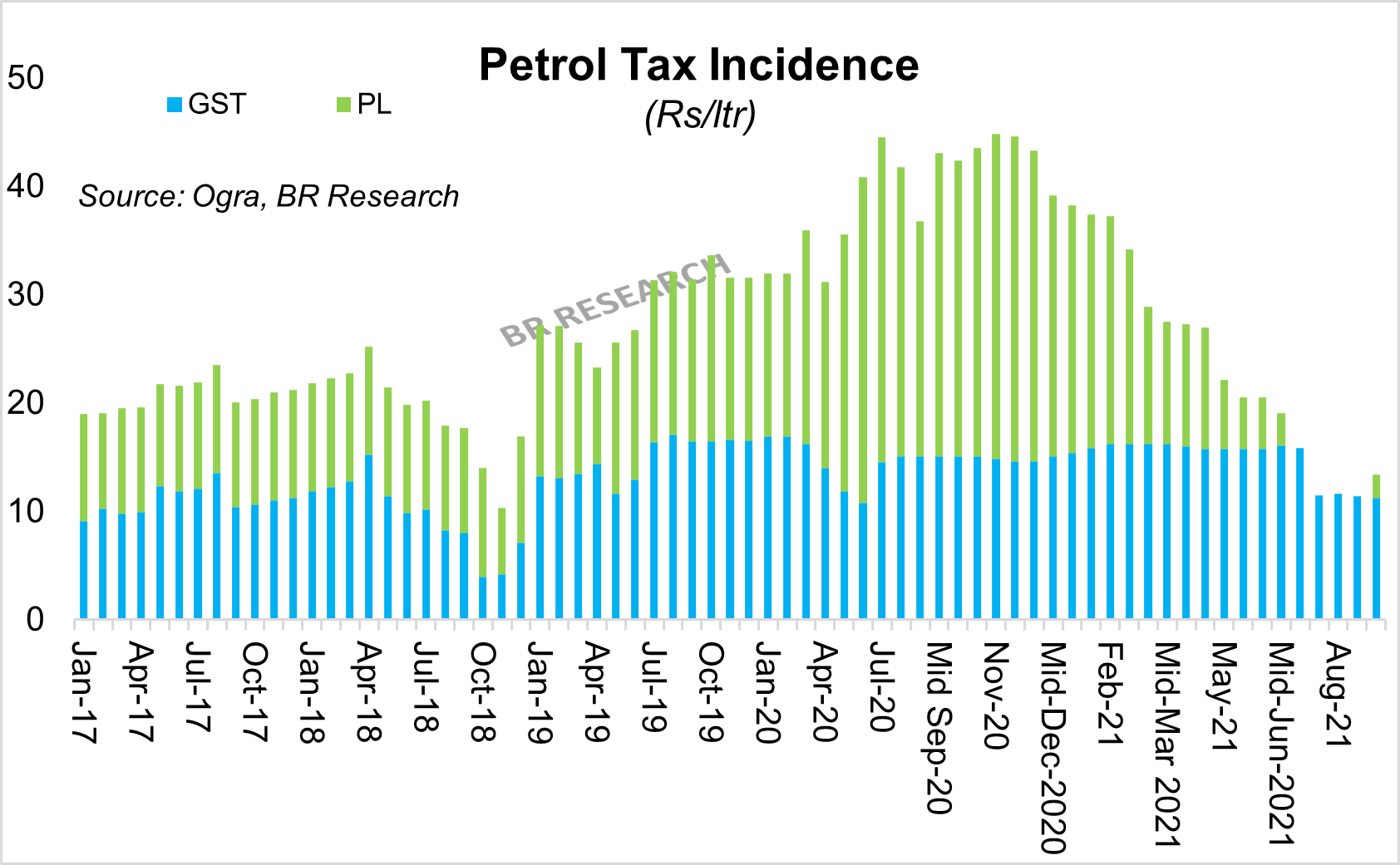In an environment where deputy commissioners will be controlling prices of essential and non-essential items, petroleum pricing will soon cease to be news. At least, in the case of petroleum, the government is still not tasking the OMCs to sell it at a “reasonable” price. Or not just yet. The hit on the revenue is a big one though, and the mood in Islamabad suggests that the PL relief is here to stay as long as global crude oil stays high.
"The government is firmly committed to ensure stability in prices of essential commodities and has sustained the price pressure in line with its commitment to the common man," were the exact words from the government’s press release. That commitment to the common man will only be put to sterner tests as the incumbents are closer to the next general elections than the ones they won.

Mind you, Petroleum Levy has made a comeback of sorts after two months, with Rs2.1 per liter on gasoline. There was room for another Rs1.5 per liter, but the authorities did not muster the courage, since the “summary” is televised and tweeted hours before every fortnightly decision. The regulator makes price recommendations, based on the existing tax rates. A move to recommend maximum PL and standard GST would make much more sense.
Back to prices. The GST on petrol continues to be 10.5 percent – lowest since December 2018. 1QFY22 could well be the worst quarter in terms of petroleum tax revenue in four years. Mind you, global crude oil had stayed well under $50/bbl for much of that period. If petroleum consumption keeps the natural momentum of growth, expect no more than Rs70-75 billion in GST and taxes on the two key products. It is not only the non-tax revenue where most concerns have been shown by experts. Petroleum contributes the most to GST, and GST the most to government’s revenue collection.

It is clear the authorities are waiting for the prices to come down, and that is never ruled out in oil market. That is the best-case scenario. The other hope is for the consumption to pick up, as prices have not been allowed to go haywire despite being at highest ever. Higher consumption could then lead to higher consumption tax, as growth would invariably pick up. While one is at it, is it time yet to ask the Finance Minister what became of the Saudi oil facility concessionary deal, which, in his wisdom, was going to solve “revenue” problems.
It was only going to be a matter of time before the axe fell on GST, after Petroleum Levy left no room to be further squeezed. Despite having to raise the petrol price to the highest ever in history, for which it attracted quite some flak, the government had to do it while reducing the GST on petrol drastically to 10.7 percent.

For the first time since December 2018, the GST has been tinkered with. It is also a first since entering the IMF program, where keeping GST for petroleum at standard 17 percent was one of the many conditions. But so was keeping Petroleum Levy at a minimum of Rs15/ltr. The total tax incidence on petrol at 10.7 percent is the lowest in around 12 years. Yet, the retail price is highest ever.
Arab light crude oil for July’s second fortnight stood at the highest since November 2018. It is the base price in rupee terms that stood at the highest ever at Rs96 per liter. The currency depreciation too has played its part, which is why even the lowest tax incidence in nearly 12 years has led to an all-time high retail gasoline price.

The government has so far tilted in favor of direct inflation considerations over the fiscal ones. Both camps have supporters, with one arguing how levying high taxes could lead to lower consumption and in turn lower GDP growth. A theory backed by raw numbers. The other camp insists that delaying the inevitable would only worsen the fiscal side of affairs, and that would eventually have inflationary consequences.
What is increasingly clear is that the government would not be too comfortable levying high taxes if the crude oil price remains north of $70/bbl. The finance ministry was clearly banking on substantially low oil prices justifying the ambitious PL collection target for FY22. Iran sanctions have not really done much to the equilibrium in the global market, and Opec continues to remain the key. July’s petroleum consumption numbers should also offer an indication on how much the prices have dented demand, if any. And that could come in handy, should the government get some room to levy taxes at current oil prices, as new retail high has now been put to test.























Comments
Comments are closed.